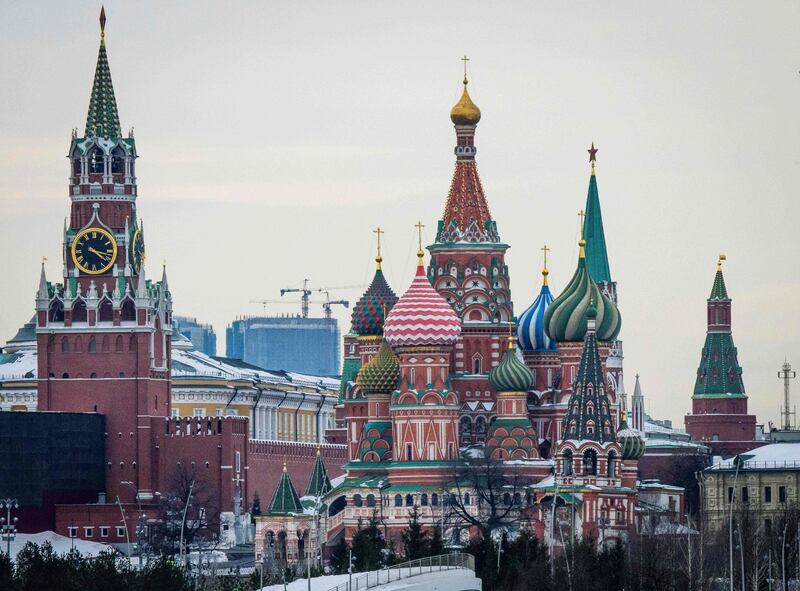Meeting sarcasm with slick animated videos, Britain's foreign ministry and the Russian embassy in London have been doing battle on social media over the death of ex-double agent Sergei Skripal.
The embassy's Twitter account is well-known for its pithy reactions to global events, once posting a picture of a duckling with the words LAME after the 2016 US expulsion of Russian diplomats.
It has adopted a similar approach to the latest row with Britain over London's claims Moscow was behind the nerve agent attack on Skripal and his daughter on March 4.
After Prime Minister Theresa May's announcement on Wednesday of retaliatory measures, its account - @RussianEmbassy - posted a picture of a thermometer against a backdrop of ice.
"The temperature of (Russian flag, British flag) relations drops to minus 23, but we are not afraid of cold weather," it wrote.
The temperature of 🇷🇺 🇬🇧 relations drops to ➖2️⃣3️⃣, but we are not afraid of cold weather. pic.twitter.com/mand9YyoaE
— Russian Embassy, UK (@RussianEmbassy) March 14, 2018
Ahead of May's speech, the embassy had sent out a string of tweets with tough words accompanied by comically basic graphics.
One warned of "yet another crooked attempt by the UK authorities to discredit Russia", with a picture showing the words "Fake News" crossed out and featuring a question mark.
5/7 Without that, there can be no sense in any statements from London. The incident appears to be yet another crooked attempt by the UK authorities to discredit Russia. pic.twitter.com/VLk6UCePVj
— Russian Embassy, UK (@RussianEmbassy) March 13, 2018
Another carried a warning of retaliation, with a picture of a ball on a horizontal line and arrows pointing down and up, with the words: "Every action has an equal and opposite reaction."
6/7 Any threat to take “punitive” measures against Russia will meet with a response. The British side should be aware of that. pic.twitter.com/DFAaB5orQE
— Russian Embassy, UK (@RussianEmbassy) March 13, 2018
A later tweet condemning British media coverage of the Skripal case was accompanied by a "toxic hazard" sign with a skull and crossbones.
Kremlin spox Peskov: Russia, having nothing to do with Sergei Skripal poisoning, is ready to cooperate with UK, but sees no reciprocity. UK media proved their “quality” – no more trust in them. pic.twitter.com/YM0fGt12L5
— Russian Embassy, UK (@RussianEmbassy) March 14, 2018
May remarked that Russia's response to the Skipral attack had been "sarcasm, contempt and defiance".
Not to be outdone, Britain's @foreignoffice account hit back Wednesday with two slick animated videos explaining how and why it had taken measures against Moscow.
The first highlights past incidents of Russian military and cyber aggression, complete with animated maps and an ominous photograph of President Vladimir Putin.
The use of a nerve agent in Salisbury follows a well-established pattern of Russian state aggression pic.twitter.com/eY4Vy1pw9t
— Foreign, Commonwealth & Development Office (@FCDOGovUK) March 14, 2018
It also featured a skull and crossbones, this time as a "poison" sign, to illustrate the death of ex-Kremlin critic Alexander Litvinenko in Britain in 2006, a killing it blamed on Russia.
By Wednesday, the video had been viewed almost 87,000 times, although the second, later video detailing May's expulsion of Russian diplomats and an officials-level boycott of the football World Cup, had only attracted 5,000 views.
It was right to offer Russia the opportunity to provide an explanation. But their response has demonstrated complete disdain for the gravity of these events. pic.twitter.com/dv2EiTDRTQ
— Foreign, Commonwealth & Development Office (@FCDOGovUK) March 14, 2018
__________
Read more:
Britain to expel 23 Russian diplomats over nerve agent attack
Trump reassures Theresa May of US support over Russia ultimatum
What is Novichok, the nerve agent believed to have been used against Sergei Skripal?
Salisbury: the medieval city at the centre of spy assassination bid






